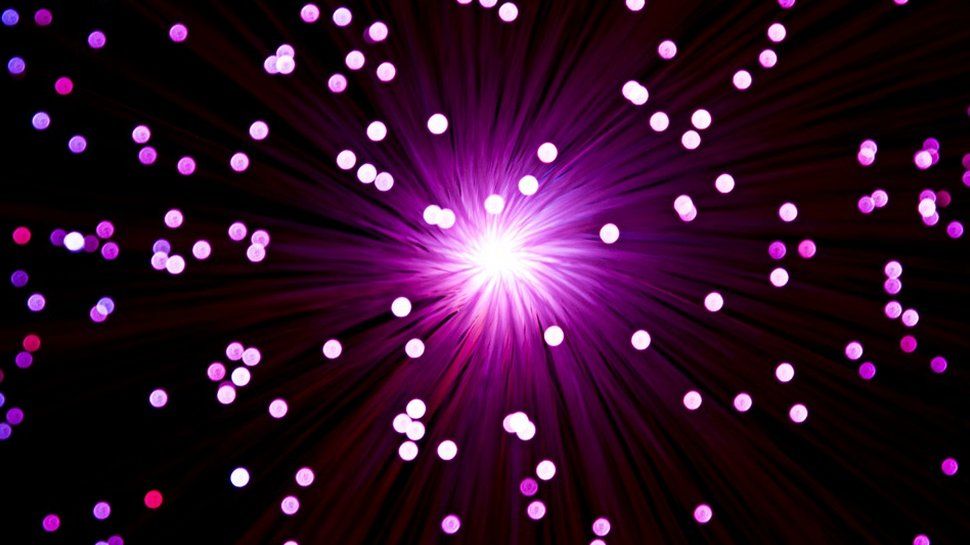
Our increasingly connected world is in the midst of a huge problem: a rapidly growing number of users, devices and services competing for a limited radio frequency (RF) spectrum. The issue is that this spectrum, which includes 3G, 4G, 5G, WiFi and Bluetooth, is a finite resource, with analysts anticipating that it will cover only 5% of capacity demand in the coming years.
About the author
Alistair Banham is CEO at pureLiFi.
Cue ‘LiFi’, a technology that uses part of the visible light portion of the electromagnetic spectrum to transmit information at very high speeds. LiFi is already having an impact on the connectivity and lighting landscapes, principally because it can provide the right ecosystem that can tackle the connectivity challenges of the new digital age and enable the billions of smart devices that are shaping how we communicate, work and ultimately, live our lives.
What is LiFi and how does it work?
LiFi communication is similar to WiFi, but provides faster, more secure and higher capacity connections using LED luminaires and lightbulbs as access points, instead of radio base stations and wireless routers. LiFi, therefore, merges lighting and telecommunications, opening up the potential for fast, secure and reliable wireless connectivity over lighting infrastructure. This means that every light socket could become a LiFi access point. Considering there are approximately 40 billion light sockets in the world, the opportunities for satisfying the ever-increasing demand for fast and dependable connectivity are huge.
LiFi works best in a connectivity ecosystem
A common misconception with LiFi is that it aims to replace RF wireless technologies like WiFi. This couldn’t be further from the truth. In fact, LiFi is complementary to WiFi. It is designed to bring significant connectivity advantages and work together with other wireless technologies to complement them both on the access side and in smart devices. In this way, a connectivity ecosystem encompassing LiFi, 5G and WiFi can provide the greatest bandwidth and support a greater quality of service for customers.
To put this in practical terms, future smartphones and laptops will have these multiple connectivity methods built-in, giving users the ability to seamlessly switch among LiFi, WiFi and 5G to take advantage of the best signal available at the time. The devices could even combine signals from, for example, LiFi and WiFi for the greatest possible speed and bandwidth.
Adding advanced levels of security
Within this connectivity ecosystem, LiFi will be able to compensate for the security limitations that RF technologies frequently suffer from. These include the vulnerability to electronic eavesdropping as well as both emission of and susceptibility to interference. As LiFi cannot pass through walls, LiFi signals are not accessible to a nearby resident, business or passing member of the public, which offers much superior privacy in the home and enterprise office settings. This is especially important for sectors such as finance, legal, pharmaceutical, intelligence and defense industries that have very robust wireless security policies where maintaining Wi-Fi networks can become very challenging.
Users are in control of their wireless security and can manage it by simply drawing the curtain and locking the door. In addition, LiFi users can also host a private wireless network in their home that is not connected to the internet. This wireless network could hold their most private digital items such as passwords, family photographs, financial information and would be virtually un-hackable. Imagine a desk lamp or a living room pendant lamp discretely holding your most important digital information which is only accessible by light, and only you know it’s there – a ‘digital safe’ in your home for the digital age.
Organisations, on the other hand, can leverage more advanced LiFi security features such as asset tracking, behavioral analytics and end user device hardware encryption. In addition, as each LiFi enabled light has a unique IP address, businesses will be able to simply deploy advanced geo-fencing in a LiFi network. This level of security is possible because each light in a LiFi network has its own unique identifier, which allows network managers to track users very precisely and analyse their behavior.
Where can LiFi be used?
LiFi-powered high speed, secure and low latency connectivity does not only boost productivity levels, but also supports high-bandwidth innovative and disruptive applications such as autonomous systems, artificial intelligence, edge computing and virtual, augmented and mixed reality.
The number of consumer and enterprise use cases can be endless. The smart home network environment as well as activities like media and gaming streaming benefit from high quality connectivity performance, allowing all users to enjoy full bandwidth. Users and manufacturers of technology for rugged devices and security-demanding industries mentioned earlier, such as military and defense, benefit from high-speed connectivity that is more secure, reliable, and able to deliver bandwidth beyond the capabilities of conventional wireless communications.
Fulfilling the connectivity promise
The digital age requires ‘universal’ connectivity that does not compromise on speed or security. By embedding a LiFi component into devices, LiFi technology can overcome the greatest hurdle to the take-off of IoT, the risk of an RF spectrum crisis. LiFi stands at the center of an evolving connectivity ecosystem that encompasses the RF spectrum. This disruptive ecosystem can ensure the connected world stays connected.
2020-02-08 14:50:00Z
https://www.techradar.com/news/the-impact-lifi-will-have-on-technology
CBMiRmh0dHBzOi8vd3d3LnRlY2hyYWRhci5jb20vbmV3cy90aGUtaW1wYWN0LWxpZmktd2lsbC1oYXZlLW9uLXRlY2hub2xvZ3nSAUpodHRwczovL3d3dy50ZWNocmFkYXIuY29tL2FtcC9uZXdzL3RoZS1pbXBhY3QtbGlmaS13aWxsLWhhdmUtb24tdGVjaG5vbG9neQ
Bagikan Berita Ini















0 Response to "The impact LiFi will have on technology - TechRadar"
Post a Comment